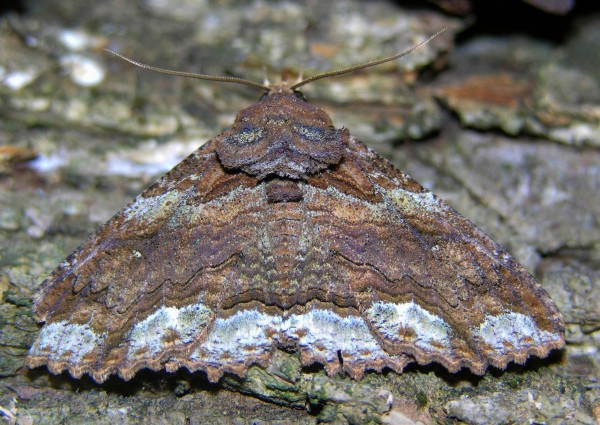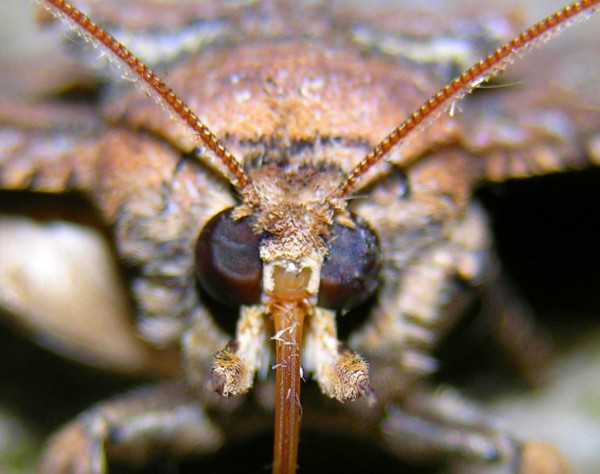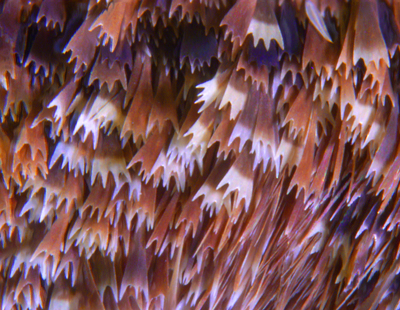Order: Lepidoptera
Family: Noctuidae
Genus: Zale
Zale lunata is a moth belonging to the Family Noctuidae, and Subfamily Catocalinae. The Noctuidae are a large family with more than 2,900 species in North America. Species of this family are mostly nocturnal, and are commonly attracted to lights at night. Z. lunata is the largest and most common of the 20 species in the genus Zale that occur in eastern North America. It has a flight season from March to November. The caterpillars of Z. lunata feed on many trees and shrubs such as maples, plums, and willows. Species of this Family have a pair of tympanal auditory organs located at the base of their metathorax that can detect frequencies of 3 to 100 kHz. These organs function to detect predatory bats. This specimen was collected in the stairwell of a dorm on the Duke University campus. It is classified as the form “edusa” because of its whitish to greenish-white terminal patches. This form generally has a wingspan of 4-5.5 cm.



Zale lunata on Bugguide.net
Zale lunata on Wikipedia
Zale lunata on the North American Moth Photographers Group at MSU.
Sources
(2) Covell, C.V., Peterson Field Guides Eastern Moths, (1984), Boston, Houghton Mifflin Company.
(3) Mitchell, R.T. and H.S. Zim, Butterflies and Moths A Guide to the More Common American Species., (2002), New York, St. Martin’s Press.